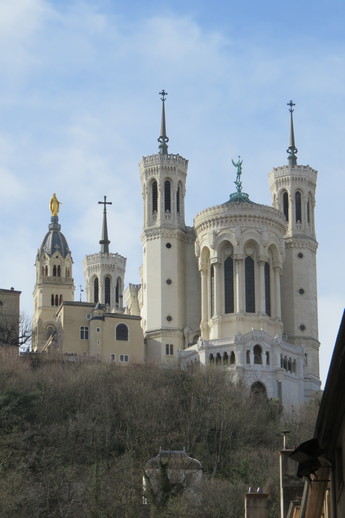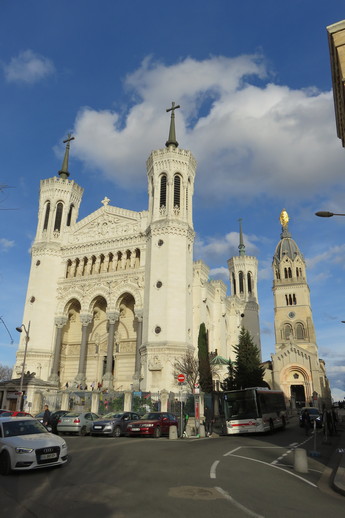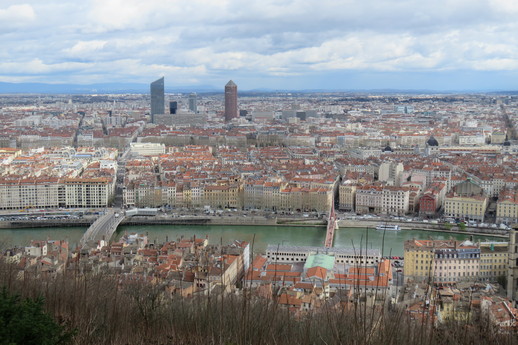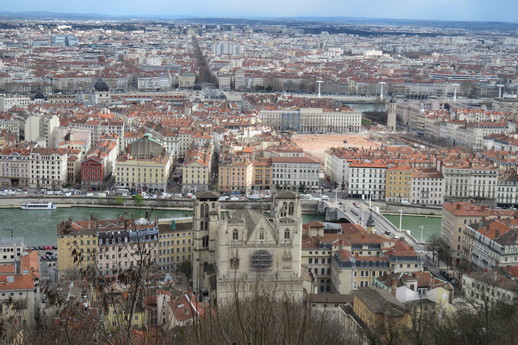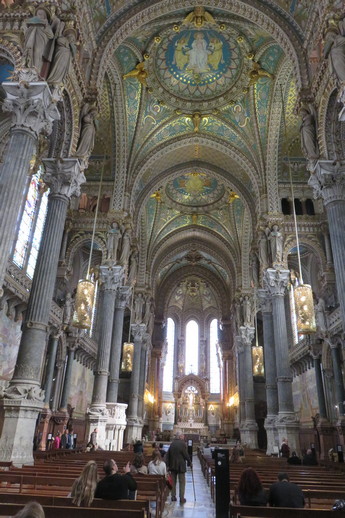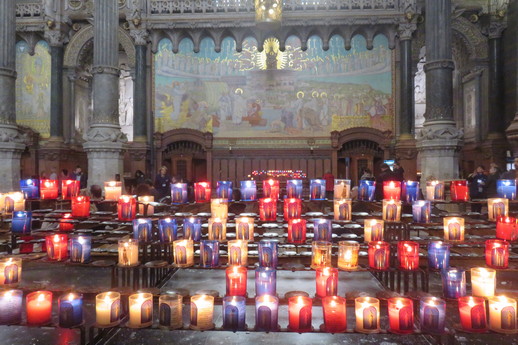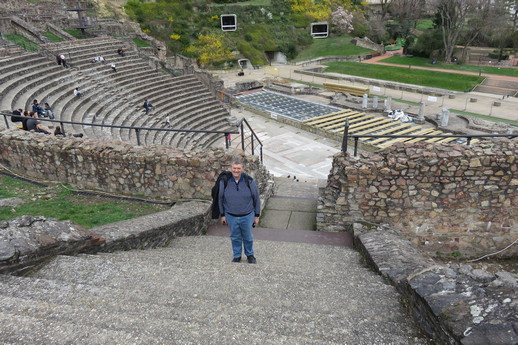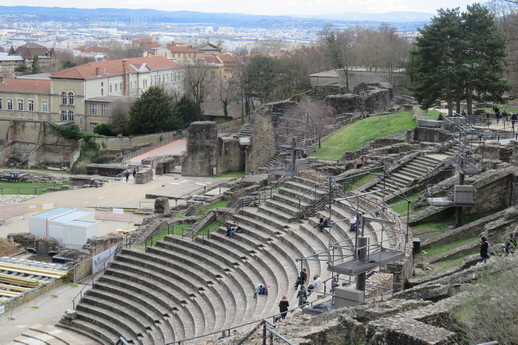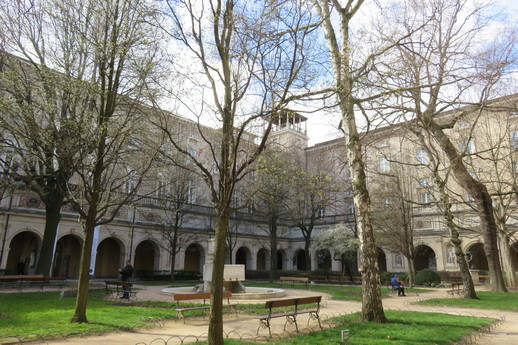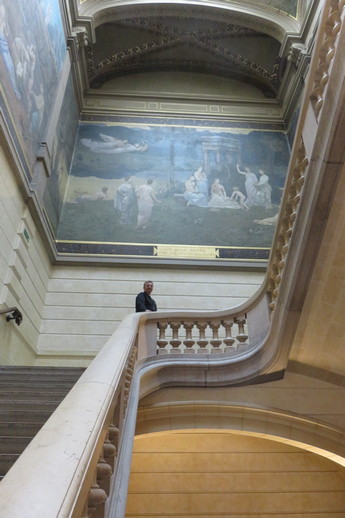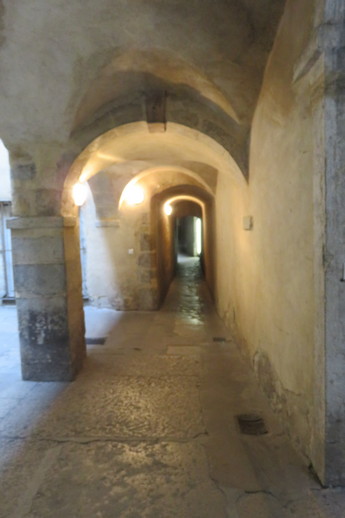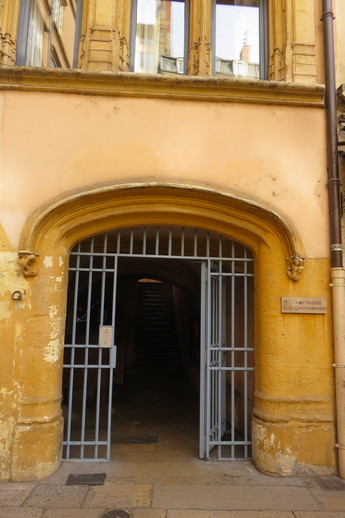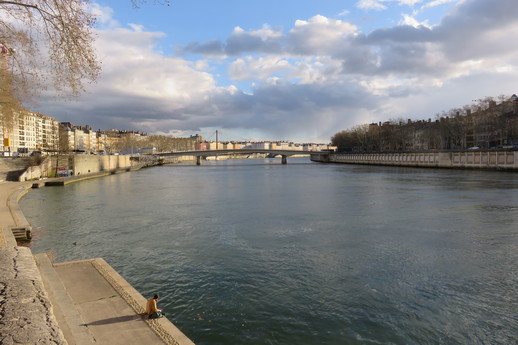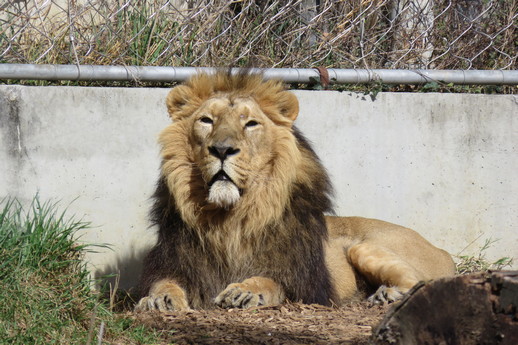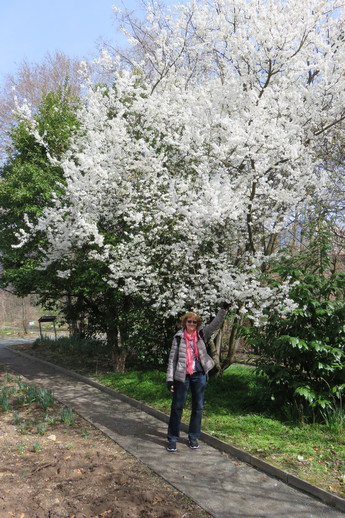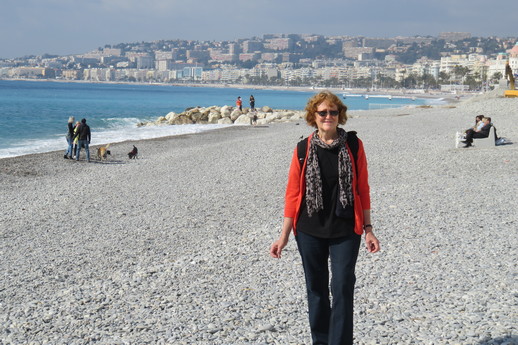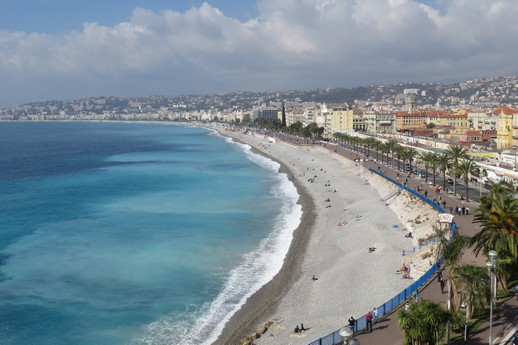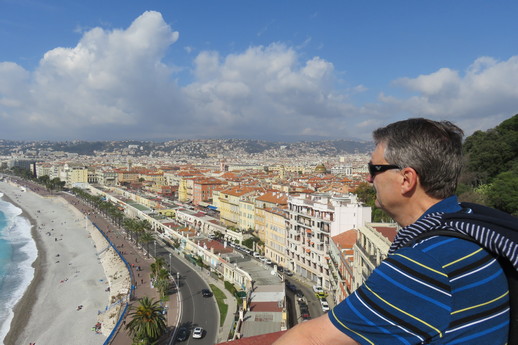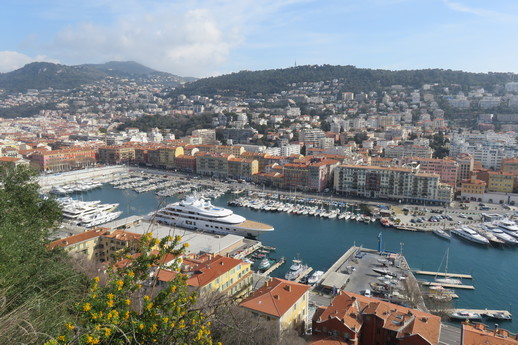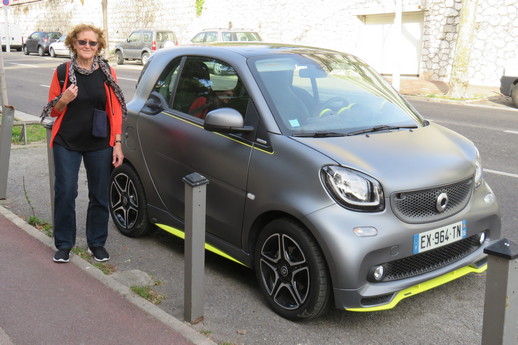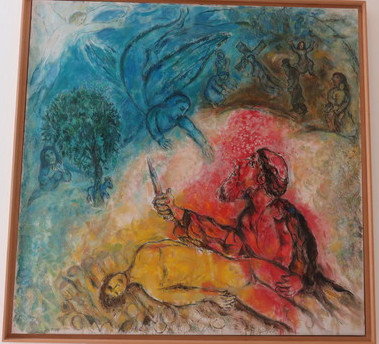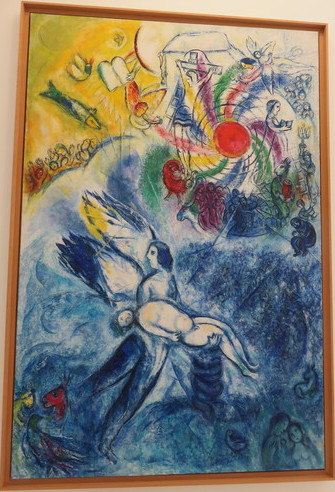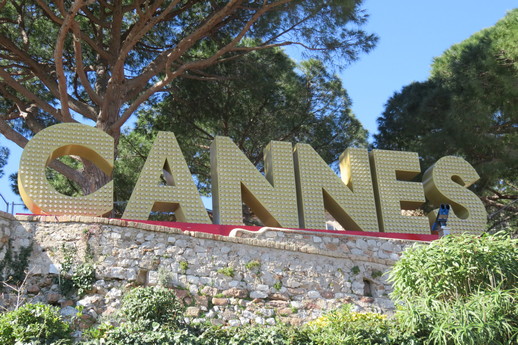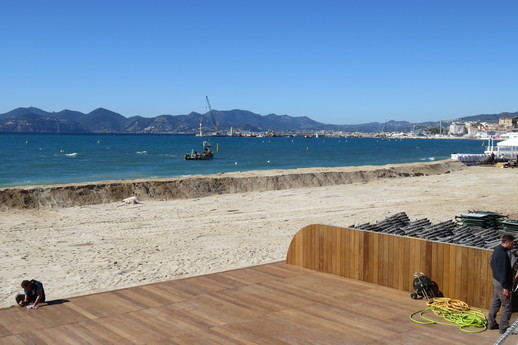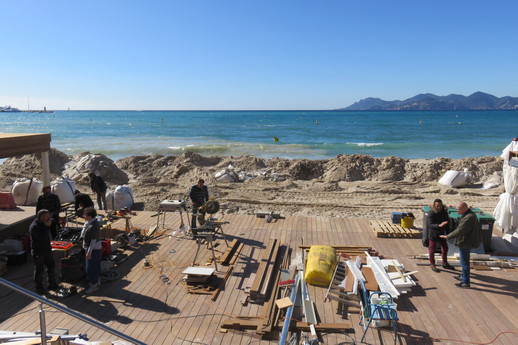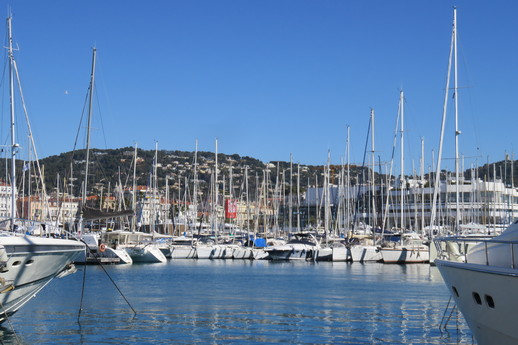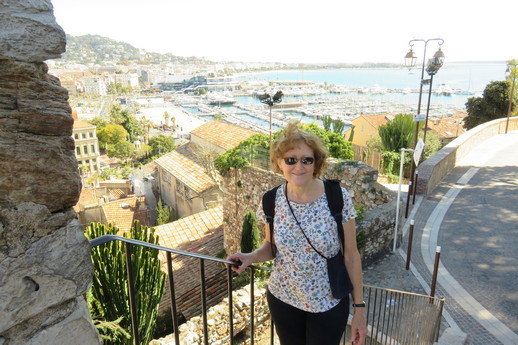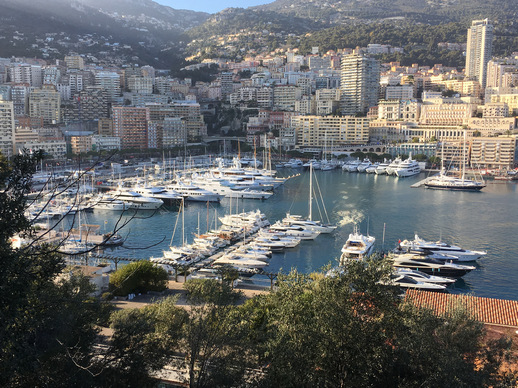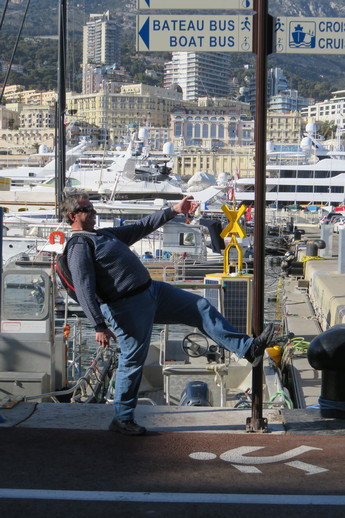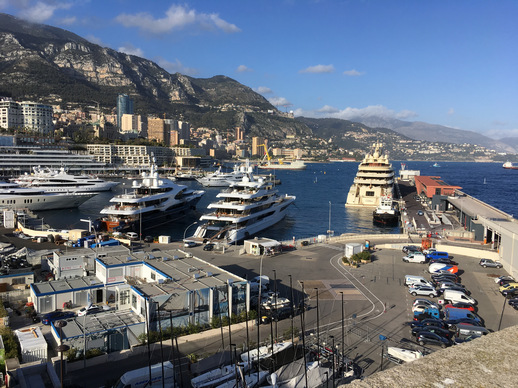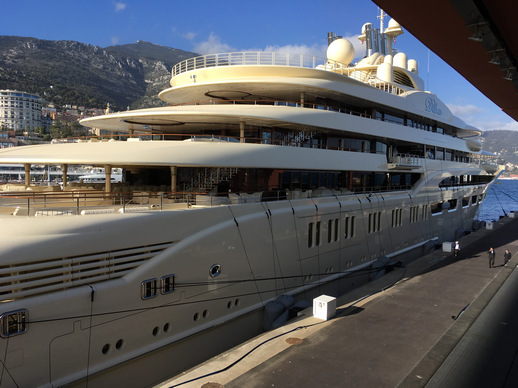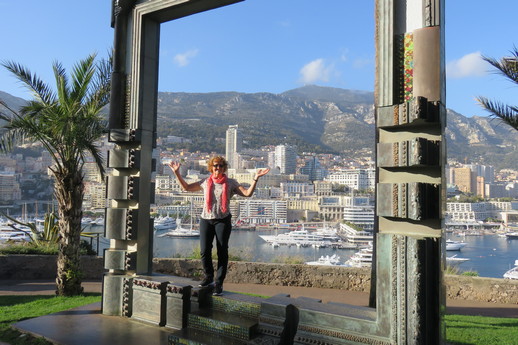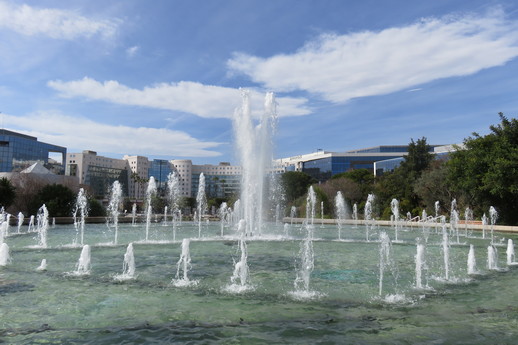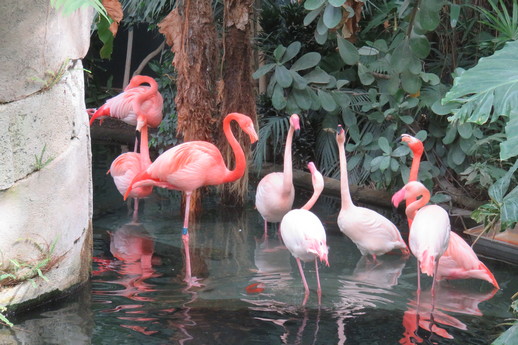The perfect weather we had been enjoying on our trip so far, had to break eventually and alas, it happened during our visit to Annecy; the forecast predicting rain turned out to be 100% accurate.
Our transit from Lyon included a brief stop at Bourg en Bresse to change trains. The wind was biting cold and the rain was falling as sleet making our wait on the platform most uncomfortable. Hot tea and a chocolate bar provided some relief.
The rain had stopped by the time we arrived at Annecy. This proved to be most helpful as we dragged our bags from the station to our accommodation in the middle of the old town, adjacent to one of the arms of the river Thiou that cross Annecy in a number of places forming attractive canals.
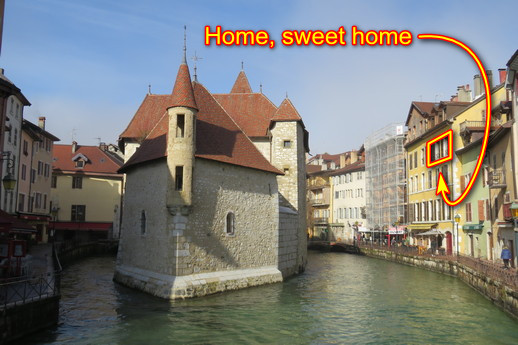
The view from our window looking towards the lake and the distant snow capped mountains, was very pretty despite the weather closing in.
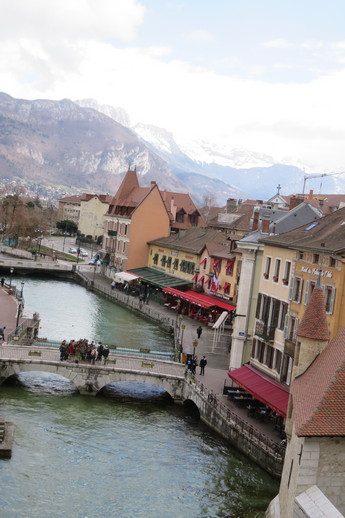
Dumping our bags, we grabbed our umbrellas and headed out. A foreshore path wraps around the lake’s edge near the town and we walked along imagining what the view would have been like in better weather.
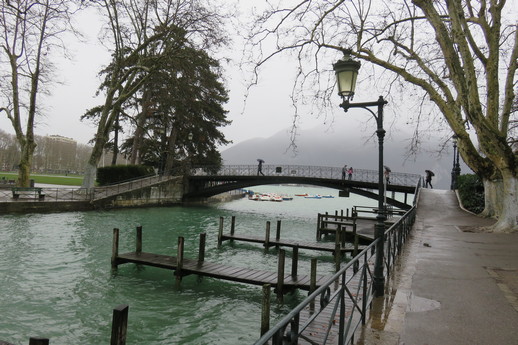
The next day I stayed in (working on our trip blog) while Chris went out to wander in the rain and make enquiries about a boat trip on the lake. In the afternoon, we climbed the steep and now slippery, cobble stone streets to the Château d’Annecy (a restored medieval castle and museum housing regional sculptures & paintings along with contemporary art) which overlooks the town. One of the castle’s towers was given over to providing historical information on human interactions with the lake, going back several thousand years. Growing concerns about damage to the lake caused by run-off and related pollution, led to the formation of a local environmental group during the 1950s. Significant remedial work was undertaken, in association with the creation and enforcement of strict environmental laws. Lake Annecy is now considered one of Europe’s cleanest lakes, with a number of the townships surrounding the lake, drawing their drinking water directly from it. The water is the clearest I have ever seen (look at the boats floating on air in the next picture).
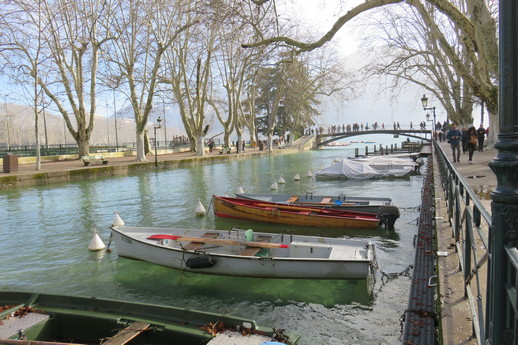
Despite the rain and biting cold, we did go on the boat tour of the lake. The commentary was in French and the windows required constant wiping to clear the fog caused by our breathing- enough said!
The clouds parted on the morning as we were packing to depart. Chris darted out to grab some pictures (this time with sunshine – see above) and we dragged our bags to the railway station under a cloudless, blue sky.
Our transit to Geneva was to be via bus. The bus eventually arrived forty minutes late and it was somewhat frustrating to stand there waiting, not knowing when it might arrive, while there were many great photo opportunities going begging, not more than 500 metres away.
We were stopped at the Swiss border and our passports inspected by a pair of machine-gun toting guards, who boarded the bus. Geneva is very close to the French border and we were soon recovering our bags from the luggage compartment underneath the bus.
Au revoir France; bonjour Switzerland.
